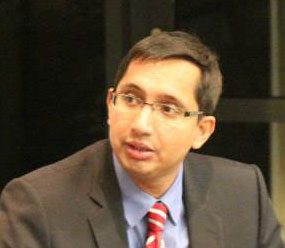By: Rajnish Tiwari
Planned obsolescence is causing not only immense harm to the environment, it might even be regarded as a risky, and to some extent an irresponsible, business strategy in a world where consumption is growing exponentially owing to the rise of the middle class in the emerging economies like China, India and much beyond; and where natural resources are depleting even faster. Average prices of some commdities (e.g. iron ore) have increased over 300% in past 12-13 years. Maybe frugal innovations are both a means and a wake-up call for us as consumers and producers to “return back” to a greater individual and collective relationality.
Today I started reading Giles Slade’s “Made to Break: Technology and Obsolescence in America” (Harvard University Press, 2006 edition, Google Books, Amazon.de). The first 20 pages that I managed to read so far have already been so thought provoking that I cannot resist myself from writing this small piece.
Slades (2006: 1) writes that it is “[f]or no better reason than that a century of advertising has conditioned us to want more, better, and faster from any consumer good we purchase” that we are sitting on a toxic time-bomb of electronic waste.
As per Slade’s narration, close to 315 million still working yet obsolete PCs were retired in North America in 2004 alone, up from 63 million the previous year. A similar story could be observed in case of mobile phones. In 2005, Slade recounts, “more than 100 million cell phones were discarded in the United States”, which amounted to “50,000 tons of still-usable equipment”. This was in addition to “another 200,000 tons of cell phones already awaiting dismantling and disposal” (Slade, 2006: 1). Slade cites a report from the Computerworld (Feb. 2, 2004: 14) to state that the “discarded cell phones represent a toxic time bomb waiting to enter America’s landfills and water table” (Slade, 2006: 2).
The author recounts that so far the waste was exported to countries like China, India, Pakistan, Bangladesh or other developing nations. But this is not feasible for all time to come as, apart from other factors: “The world simply cannot produce enough containers for America to continue at its current level as an exporter of both electronic goods and electronic waste. Consequently, all of these discarded and highly toxic components represent an insurmountable future storage problem. We do not have enough time, money, or space in the continental United States to create enough landfills to store and then ignore America’s growing pile of electronic trash” (Slade, 2006: 3).
Slade (2006: 3) defines planned obsolescence as “the assortment of techniques used to artificially limit the durability of a manufactured good in order to stimulate repetitive consumption.”
Some of the most thought-provoking lines are found in this paragraph (Slade, 2006: 7):
“A few years back, as I was visiting a touring exhibit called ‘Eternal Egypt’ with my ten-year-old son, it occured to me that while the ancient Egyptians built great monuments to endure for countless generations, just about everything we produce in North America is made to break. If human history reserves a privileged place for the Egyptians because of their rich conception of the afterlife, what place will it reserve for a people who, in their seeming worship of convenience and greed, left behind mountains of electronic debris? What can be said of a culture whose legacies to the future are mounds of hazardous materials and a poisoned water supply? Will America’s pyramids be pyramids of waste?”
Even though Giles Slade in his book explicitly refers to the United States and North America, the sadder part of the story is that it is equally true for other developed, industrialized nations; and increasingly also for emerging market countries like China and India. Our present-day understanding of growth and economic progress seems to have become flawed. Maybe we need to take a closer look at our distant past, where we could seek inspirations from, and live in sync with the nature, so “wise and frugal” (in words of John Milton). Going back to the roots might just enable some insights that can better align the environment with our economic “needs”. Here, it may be useful to remember Mahatma Gandhi, who famously said: “The world has enough for everyone’s needs, but not everyone’s greed”.
Years ago, while writing a seminar paper for my studies, I analyzed Adam Smith’s theory of the invisible hand. At that time I realized that one of the biggest challenges that we as individuals (or firms) face is in recognizing our “true” gains or long-term (societal and inter alia even personal) interests. These are often sacrificed at the altar of short-term goals.
Maybe, just maybe, frugal innovations are both a means and a wake-up call for us as consumers and producers to “return back” to a greater individual and collective relationality.
—
About the author
 Dr. Rajnish Tiwari is senior researcher at the Institute for Technology and Innovation Management of Hamburg University of Technology (TIM-TUHH), where he has been leading the ‘Global Innovation‘ research programme since 2006. His particular research interest focuses on internationalization of R&D in India. He has published extensively on frugal innovations and India’s automotive industry. Rajnish leads the German-Indian Round Table (GIRT) in Hamburg. He is one of the founding members of the Center for Frugal Innovation at TIM-TUHH.
Dr. Rajnish Tiwari is senior researcher at the Institute for Technology and Innovation Management of Hamburg University of Technology (TIM-TUHH), where he has been leading the ‘Global Innovation‘ research programme since 2006. His particular research interest focuses on internationalization of R&D in India. He has published extensively on frugal innovations and India’s automotive industry. Rajnish leads the German-Indian Round Table (GIRT) in Hamburg. He is one of the founding members of the Center for Frugal Innovation at TIM-TUHH.
